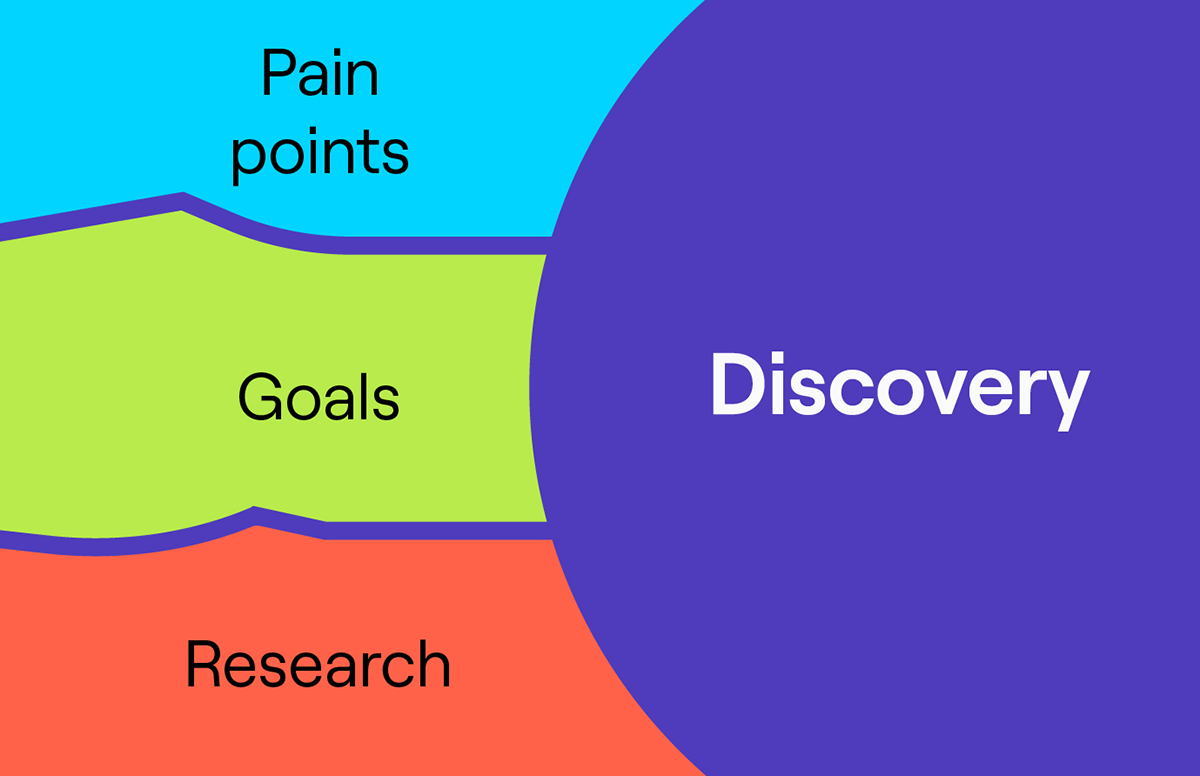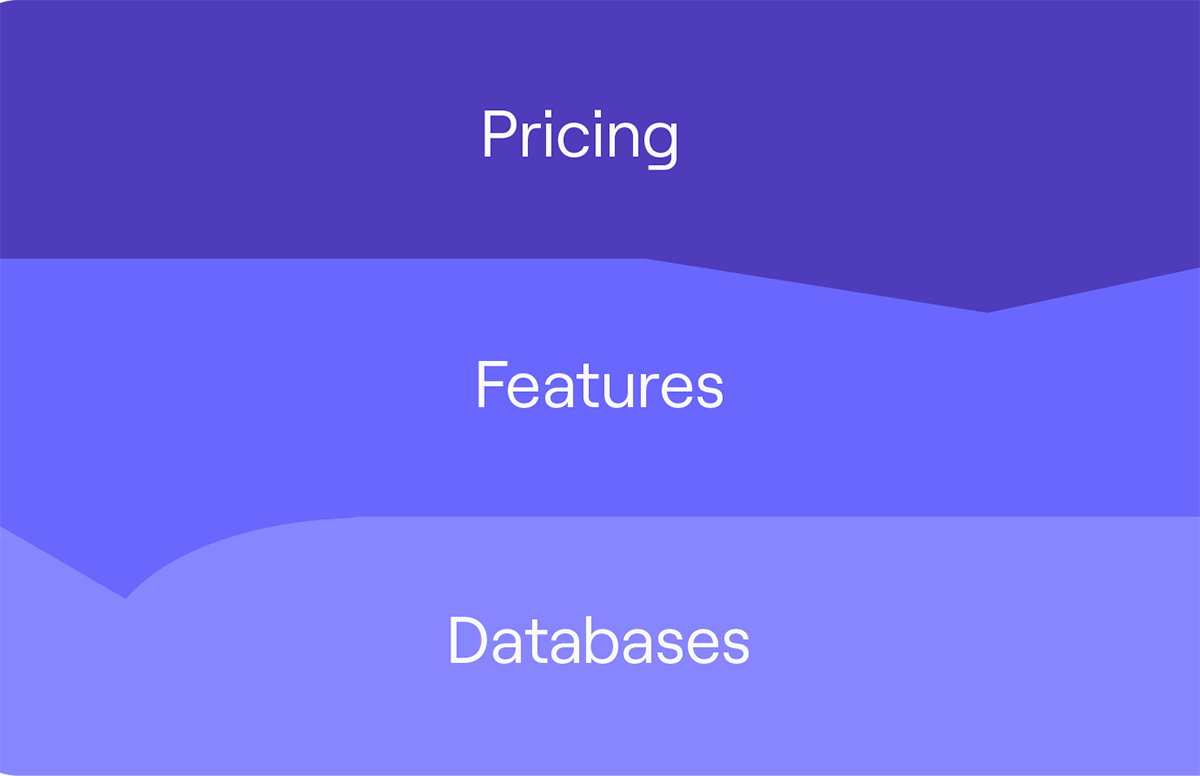How to Build the Perfect ABM Campaign in 2025
ABM campaign resources on this page:
ABM campaigns have taken the B2B marketing world by storm.
Some have hailed it as a “magic bullet” that can cure all marketing ills. Others are confused about what it is and how you can get started with it.
The truth is:
There’s no trick to account based marketing.
It isn’t a gimmick or an antidote to every marketing malady. It’s a process, just like any other process in B2B marketing. While it can undoubtedly deliver numerous benefits to a business, ABM takes time, skill, and lots of hard work.
In this article, we’re taking you beyond the hype with ABM campaign advice from a world-class team of ABM experts!
So, let’s draw back the curtain and find out everything there is to know about ABM marketing campaigns for 2025 and beyond 👇
What is an ABM Campaign?
An ABM campaign is a B2B digital marketing strategy where sales and marketing align to engage with potential customers who will most likely bring in the highest revenue.
An account-based marketing campaign aims to target, engage, nurture, and convert high-value prospects into lifetime customers.
ABM marketing campaign activities include many different types of content and outreach approaches, including:
- Social media posts.
- PPC advertising.
- Blogging.
- Ungated or gated ebooks and whitepapers.
- Email marketing.
- Outbound sales outreach.
- Webinars and other in-person/online events.
You don’t have to use all these methods, but if you want to run a successful ABM campaign, you should consider using at least two. Most marketing and sales teams use a tailored mix of social media, cold email, and cold calling.
Three successful ABM campaign examples
1. Creating meaningful connections with personalised emails
One of the most well-known ABM campaign examples is how Salsify used personalised emails to increase registrants to their roadshow.
Not only did some great ABM direct mail ideas contribute to the success of their campaign, but the teamwork between marketing and sales also played a major role.
Cognism saw the effects of this strategy first-hand when DCSL GuideSmith used the solution to build compliant B2B data lists.
Here’s a snippet of how this method of ABM worked for them:

Business Development Executive @DCSL GuideSmiths

2. Segmented lists for improved engagement
Personify took its SaaS marketing to the next level with an ABM program that resulted in 39x more engaged website visitors within the first few months.
They did this by identifying their ICP and listing their top accounts. Then, marketing and sales teamed up to create personalised ad campaigns for each stage of those buyers’ journeys.
Similarly, Metrikus used Cognism to execute a scalable ABM strategy. The team pulled contact data from Cognism and then ran outbound sales sequences around event content.
They said:
3. Food for higher response rates

If this image catches your eye, you’ll be pleased to learn that it’s all part of ABM targeting.
That’s right.
Media company GumGum used McDonald’s personal branding to create a highly personalised campaign to win over its key stakeholders. Each executive at the company and their media agencies received a burger kit demonstrating what GumGum could do for the brand.
And this isn’t the first time that giving the gift of food has won over potential customers’ hearts and stomachs.
Using Cognism’s quality B2B contact database, the Cupcake Campaign was born. Cognism’s SDRs created a list of target buyers and personalised messaging that resonated with each prospect, and then they sent them cupcakes using ReachDesk.
This ABM marketing campaign resulted in an 80% increase in response rates when the campaign target was 20!
Want to try Cognism and see if our data works for you?
Test our data with 25 free leads!
How do you plan the perfect ABM campaign?
Some companies believe switching from a conventional B2B marketing strategy to ABM is difficult.
But that’s really not the case. To help you get started, we’ve identified eight easy steps to set up, launch, and evaluate the perfect ABM campaign 👇
1. Agree on the best type of ABM for your business
There are three types of ABM:

1. Picking a handful of high-value accounts and putting all your budget into targeting
This type of ABM focuses on targeting one to five of your highest-value accounts in as personalised a manner as possible.
2. Sector-specific - selecting a larger pool of accounts in the same industry
A sector-specific form of ABM that targets one to 30 target accounts in the same industry with various marketing initiatives.
3. Personalised traditional digital marketing
This ABM tactic uses traditional marketing efforts but with more customer-centric messaging to gain the attention of 30 or more key accounts.
Some sales and marketing teams call these 1:1, 1:few and 1:many:
- 1:1 refers to the marketer-to-account ratio. In other words, marketing to one strategically chosen high-value account with very specific messaging.
- 1:few clusters several similar accounts linked by related issues or needs. This type of ABM allows you to target your messaging and marketing resources.
- 1:many is the closest type of ABM to more traditional marketing. It involves leveraging technology to target a larger number of organisations at scale.
Depending on your level of resources and strategic approach to ABM, you may choose one or a combination of these three types.
Marnie Giuranna Zaccaria, Global ABM Lead at Finastra shares a lesson she learned in implementing her strategy using these three types.
“We had 25 strategically-chosen accounts we were working on in our ABM team. The sales team chose three accounts to focus more attention on, and the others we clustered together to do a 1:few approach. Of the three we bet on, only one was worth the time and resources we put into it.”
This sparked Marnie to switch up the strategy. All accounts were marketed with a 1:few approach until they were further qualified and strong opportunities for a 1:1 relationship emerged.
This change allowed Marnie and her team to act swiftly and conserve resources. They didn’t decide to upgrade an account to 1:1 until they had a solid idea of whether it was likely to close.
But how can you be sure you’re choosing the right type of ABM for your business?
Don’t be scared to experiment, as Owen Steer, Senior Strategist at Digital Radish, explains:
"Run a pilot program. Probe the market with the one-to-many method. If you get good results, you can ramp up the pilot into one-to-few or one-to-one. You need to know the science behind your ABM operation to help you make informed decisions."
Building an ABM marketing campaign isn’t going to be quick. It can take some trial and error. Nick Mason, Founder and CEO of Turtl, offers the best advice:
"Start small and get an understanding of what you want to achieve."
2. Align marketing and sales
On the face of it, building an ABM campaign means asking your SDRs to work with fewer leads.
What salesperson wants to do that?
ABM can’t work unless sales are entirely on board with the process, so it’s vital the two departments align and agree on a shared strategy and goals.
Much like ABM itself, alignment can sound like hard work. Owen says:
"Getting buy-in from internal stakeholders, first and foremost, is absolutely essential. Of course, you need to secure a budget for your ABM campaign, but make sure you're setting realistic expectations."
"Be aware that it's a long-term campaign. ABM is not a short-term revenue grab."
Marnie adds:
“In my experience, it takes about three years to get an ABM strategy up to speed because there are often a lot of stakeholders who are used to doing things one way. You’re having to teach them something new.”
“I highly recommend anyone starting out with ABM to invest time in educating your company. Hold workshops and find spokespeople who can be an advocate for your message.”
Watch this helpful video to learn more about breaking down silos and integrating B2B sales with marketing 👇
3. Assemble your ABM team
When you’ve proved the value of using ABM campaigns to your B2B sales team, it’s time to start working together to help come up with great ABM campaign ideas.
Start by assembling an ABM team of people from your business. They will all have different roles but common aims. These could include:
- SDRs/sales reps - The inside sales reps that solely focus on outbound lead generation.
- MDRs/marketing reps - The sales reps responsible for following up on all marketing demand generation.
- Sales operations- The people/department responsible for driving efficiency in your sales team.
- Marketing operations- The people/department responsible for driving efficiency in your marketing team.
- Campaign marketers- The people responsible for developing personalised campaigns end-to-end and who are versed in multi-channel ABM marketing.
- Content producers- Content writers, graphic designers, and video producers.
- Customer success managers- The people/department responsible for developing key customer relationships and promoting retention and loyalty.
Owen’s advice:
"Have regular meetings between sales, marketing, and CS to agree on a plan for each account and see how you can leverage the knowledge you already have in your team."
Arrange an introductory meeting involving all these stakeholders. Use this time to define your ABM goals and select the B2B marketing metrics you want to track.
When your ABM campaign is up and running, schedule regular follow-up meetings with everyone so you can measure success together.
4. Define your ABM goals
If you don’t know your marketing and sales goals, how will you know when you have achieved success?
Giving your ABM team clearly defined goals helps them focus their efforts and determine what the success of your campaigns will look like.
Joe Birkedale, Founder and CEO of Project36, says:"Before you start with ABM, you need to determine what you're looking to get out of it. What's your perfect end result? What are you hoping to achieve?
"Bear in mind that ABM is not a silver bullet. It normally takes a lot of time and effort before you see success. A good ABM vendor will seek to outline the end goal first, then describe the steps you need to take to get there."
To determine your account based marketing goals, think about what you want to accomplish from your new campaign and go from there.
5. Select the metrics to track
As mentioned before, ABM isn’t a "quick win” activity. It can take a lot of time before it starts producing results.
When you start running an account based marketing campaign, you’ll need to prove to management and the broader business that it’s worth the time and expense. The only way you can do this is to monitor your ABM metrics.
Owen says:
"You must set the correct lead gen KPIs before launching an ABM campaign. All stakeholders need to be fully aligned on these metrics.
"Think about the following: what does success look like? Who is responsible for achieving these metrics? Who and how will you be measuring results?"
While the metrics you track may vary from campaign to campaign, at Cognism, we’ve found that there are some core metrics that you need to monitor —especially if you’re just starting out with ABM.
- Agree on the ABM performance metrics to track before starting your ABM campaign.
- Align sales and marketing and ensure both teams are fully aware of the metrics they need to monitor.
- Be transparent in sharing the results of your ABM activity as the campaign progresses so both teams learn together.
"Moving further up in the sales funnel than revenue and pipeline, which are the ultimate metrics that we're looking for, the thing that we're really interested in is genuine engagement."
"You need to understand engagement more deeply than who clicked what and who downloaded what. We really look for who's spending time on what parts of what particular document." - Nick Mason.
These are the key metrics to help you get started with your ABM marketing campaign:
6. Build your target list
ABM is an extremely effective way to win bigger deals from more clients in the B2B space.
However, it takes a considerable amount of investment, time, and money for it to work. For this reason, you need to have a robust plan before you start your ABM operation.
You can’t run ABM campaigns on an ad hoc basis. Part of your preparation for ABM is building a prospecting list of targeted leads. You need to define who you are going to approach before you start.
Follow these steps to help you build your ABM target account list:
Step 1: Create your Ideal Customer Profile (ICP)
ABM requires you to get your sales and marketing teams aligned and working together. Once you’ve done this, you need to run this exercise:
Create a profile of the type of account you will target with ABM.
Unlike traditional forms of marketing, where the net is cast wide in the hopes of catching large volumes of customers, ABM is all about getting hyper-focused and granular. The key to ABM campaign success lies in identifying a small number of high-profile accounts and targeting them with personalised campaigns.
For this to work, you need an Ideal Customer Profile (ICP).
Nick Bennett, Director of Evangelism and Customer Marketing at Alyce, expands on this:"You need to be absolutely clear who your Ideal Customer Profile is. This is something every business should do. It's a beneficial exercise even outside of account based selling."
"Who are we not selling to at the moment that we could be selling to? That's a good question to ask."
Step 2: Measure first-party intent
First-party intent or engagement is information from end-user engagement with your brand.
This could take the form of:
- Event attendees.
- Users who have viewed or downloaded content.
- People who have filled out online forms.
At this stage of your B2B list-building, you must gather all this information. You’re looking for anyone who has directly engaged with your brand.
Owen says:
"Once you have all the ABM data, study it. Are any of them in the buying stage right now? Have they signaled any intent to buy? Add any users with intent to buy to your target list."
Step 3: Measure third-party intent
If first-party intent is all about people who have directly engaged with your brand, then third-party intent is about people who could be interested in your company but may not know about it yet.
You are looking for people who have engaged and shown interest in your industry or sector. These could be:
- People viewing competitor websites.
- Users searching for specific terms on search engines.
How can you find these people? Follow these two steps:
- First, define a set of keywords that are relevant to your industry. Be careful with these keywords - they must be relevant.
- Draw up a list of around 250 keywords. Always double-check your list to make sure the terms you’re using aren’t bringing in irrelevant search results.
Nick Bennett says:
“50% of any ABM strategy is building the list, so who is involved in curating the list is very important. At Alyce, the revenue marketing, sales leadership and RevOps teams are responsible for building the accounts list.”
Owen advises:
"Use tools to find people searching online for your keywords. Add these people to your ABM target list. This is a good option for smaller companies with low inbound volume."
Step 4: Order your target list
Now you have a list of people, it’s time to put them in the order you will target them.
You can use all three methods we’ve discussed - but be scientific. Don’t just go after the biggest or most famous companies - look for targets that best fit your offering.
You should also prioritise the accounts that have a strong intent to buy. Use your alignment meetings to decide which accounts to target and the type of ABM campaign plan you’ll need to deploy.
Owen says:
"ABM is not just multi-channel marketing. It's best practice marketing. But there's more to it than just using multiple lead sources. It's about treating the accounts you're going after as markets in their own right."
"There's no better resource for a marketer to learn more about accounts than their own internal sales and customer success teams."
7. Create personalised content
With ABM, you have to create content that resonates with every individual decision-maker inside your target account. The more personal you can get, the better.
Ideally, you want to create one-off content addressing their specific needs.
Here are five steps on how to create personalised content for ABM:
Step 1: Identify the Decision-Making Unit (DMU)
Once you’ve developed your ICP, you can use it to inform the next stage - creating lists of the ideal customers you want to target. Then, when you’ve built your target lists, go even deeper.
Identify the Decision-Making Unit (DMU) inside your target company. The DMU is a group of people who have influence over purchasing decisions.
ABM is a highly personalised play - you’ll need granular intelligence on every member of the DMU.
- Find out everything you can about them.
- Create a LinkedIn ABM campaign to connect with them.
- Conduct online research.
- Think about the messaging that would make an impression on them - individually, not collectively.
- What are the motivating factors for everyone who would have an input into purchasing your product?
- How can you reach them with the kind of messaging that will make them want to buy?
Step 2: Define their pain points
Work out individual pain points for everyone in the DMU.
For example, are they looking to reduce costs, save time, grow their sales, or streamline their existing processes?
Interview the salespeople who are interacting with the DMU.
Sales reps work at the coalface of business every day. The information they pick up during their qualification and discovery calls can be invaluable to the account based marketer.
Use their insights to define prospects’ pain points. Then, use them to create helpful content for your account based marketing campaigns.
Step 3: Choose the right medium
On average, seven to eight influencers are involved in every business decision. Each influencer is different, so it stands to reason that they will all respond to content in different ways. Some people respond better to different types of content than others.
In today’s modern marketing world, there is a wide range of content types to choose from.
Popular formats include:
- Blogs.
- Videos.
- Case studies.
- Whitepapers and guides.
- Webinars and podcasts.
- Letters and direct mail.
- Templates and checklists.
- Reports and surveys.
With so many options available, how can you be sure you’re choosing the right one?
Again, ask your sales team. They’ll know from experience what resonates most with different types of buyers.
Aligning marketing with sales is the surest route to success with any ABM multi-touch campaign.
Step 4: Select the right channels
Knowing what content to produce is just as important as knowing where to promote it.
Go back to your ICP—where are your targets spending their time online? What social media channels do they most often engage with?
Do your research. Check your own social media channels and email campaigns.
Where are you seeing engagement from your target accounts and others like them?
Study your data and make decisions based on it.
When activating your content, tailor and customise your messaging for each prospect.
Personalisation is the key to ABM engagement.
Step 5: Timing is everything
Successful ABM campaigns contain multiple steps involving numerous channels and content types.
The more senior the decision-maker, the shorter your content must be in the first step.
Senior decision-makers will have no time in their day to consume long-form content. It’s only later, at the decision stage of the buying journey, that they’ll have time for long content.
Build up to that point by delivering smaller pieces of content at regular intervals.
"Personalisation is the difference between ABM working or not working. But the personalisation has to be meaningful, and it really comes down to who you're going after."
"For example, the type of business sector they're in and the type of person you're looking for. Knowing this will help you determine the ABM tactics to use." - Nick Mason.
8. Launch your ABM campaign
Preparation over. It’s time to get ABMing!
Start distributing the content you’ve created to the people you have chosen.
When your content is being sent out, ask your sales reps to start making inroads into your target accounts. Make calls and set up meetings and demos.
If your content is good and well dispersed, your buyers will already know who you are.
You know their interest in your product. You see the solution you provide for them.
It’s time to move them through your account based marketing funnel.
Wondering how long your ABM campaign will take to show results?
Joe says:
"It will vary dramatically based on the product, service, or solution offered. Look at your existing sales cycle. If, for example, it normally takes 12 months from inquiry to order, then expect something broadly similar.
9. Track ABM engagement
You can’t just sit back and relax when your ABM campaign is up and running. ABM’s guiding principle is to build and maintain deep and meaningful relationships with your target accounts.
You’ll have to track engagement to measure success in growing those relationships.
What is ABM engagement?
Account based engagement is any interaction a prospect has with your ABM activity.
There are two types of engagement:
Digital engagement
This includes any online interactions with your prospects.
For example:
- Opening an email.
- Visiting your website.
- Downloading a piece of content.
- Reading a piece of content.
- Filling out a survey or form.
- Signing up for a newsletter or mailing list.
Physical engagement
This includes all real-world interactions with your prospects.
For example:
- Onsite visits or event attendance.
- Phone calls.
- Direct mail.
- SMS.
- Demo attendance.
How to track ABM engagement
At Cognism, we regularly help our customers to run targeted ABM campaigns. We encourage them to track the engagement they have with their prospects by using the following ABM campaign template:
We’ve found this ABM campaign planning template useful for tracking ABM engagement over time.
It lists each engagement on a day-by-day basis and shows how each interaction contributes to the success of the entire campaign.
The secret of ABM engagement
ABM engagement is about time. It’s the same with any purchasing decision you make. For example, the more time you spend in a shop, the more likely you will buy something.
So, it is with B2B buyers. The more time they spend interacting with your company, the more interest they show in buying from you.
Tracking engagement is the vital first step in measuring the success of ABM. It’s simple to understand and easy to track, and it can give you some useful insights early on.
"As campaigns are going, part of the alignment process needs to ensure that insights and information regarding genuine engagement are filtered down to sales."
"Make sure that those real-time metrics are being shared across the company to make the most of what you're learning." - Owen Steer.
10. Evaluate and iterate
Starting with ABM can be a trial-and-error process. However, one of its best features is that it creates excellent marketing data.
- Study your data while your campaign is live.
- If you’re using tech, look at its reporting functions or features.
- If you’re running ABM tech-free, monitor engagement rates, especially digital engagement.
After a short while, you’ll be able to tell what kinds of messages are resonating and what isn’t.
Also, keep up with your sales alignment meetings!
Ask your sales reps what lines of inquiry are working better than others.
If something is working well, double down on it. If something else is failing, switch it out. Use A/B testing to perfect your ABM strategy.
"However long your delivery stages for ABM, the final step should be: measure, learn, optimise and repeat. It's not a set-and-forget program. ABM is a living, breathing thing, so it will change. It takes time."
"If you want revenue tomorrow, ABM is not the program for you." - Joe Birkedale
11. Use tech
You can use technology to enhance the effectiveness of your ABM campaigns; it’s not essential, but it can help!
Amber Bogie, Director of Global Demand Generation at Reachdesk, recommends keeping it simple:“One thing I’d say to any new ABMers is that there’s no one tool that does it all.”
“You can be talked into a lot of new software tools; there are hundreds out there but you need to be clear on what your priorities are. It’s the only way of deciding on the tools you need.”
“There are some I’d recommend off the bat, and others I’d say to wait until you have a little more ABM experience and maturity.”
Amber recommends the following core ABM tools:
- A display platform.
- Data analytics for target accounts and data delivery orchestration.
- Content experience.
“These aren’t limited to companies doing ABM, but they are essential to starting an ABM strategy.”
Here is a list of technologies recommended by Cognism that you can use to implement ABM:
"You can absolutely do ABM without technology. Don't rush into making decisions for a tech stack when trying to learn and implement ABM."
How can I tell what tech is best for me?
The ABM industry is booming! It has the highest return on investment of any B2B marketing tactic. There are a wealth of agencies and sales automation tools out there that promise to take your ABM campaigns to the next level.
But, with so many choices available, it’s harder than ever to pick the right one for your business. Joe adds:
"ABM doesn't need a sophisticated tech stack. A spreadsheet and good data are really all you need at the start."
"My advice to my clients is: don't go mad with tech!"
"As an ABM agency, we often spend a lot of time unpicking our customers' tech stacks. They can become overly complex and convoluted and slow you down in the early stages."
"Get your ABM campaigning right from an operational level first, then add tech later."
Build successful ABM campaigns with Cognism
Build the perfect ABM campaigns using B2B data from Cognism. Quality GDPR-compliant data means:
- Better deliverability with verified B2B emails.
- 5x higher reach and 3x higher connect rate with accurate, verified mobile numbers.
- Connect with key accounts primed to buy.
Plus, a whole lot more!
Get started today! Click 👇 to book your demo.
.png?width=672&height=905&name=1_ABM%20Metrics%20infographic%20(1).png)





